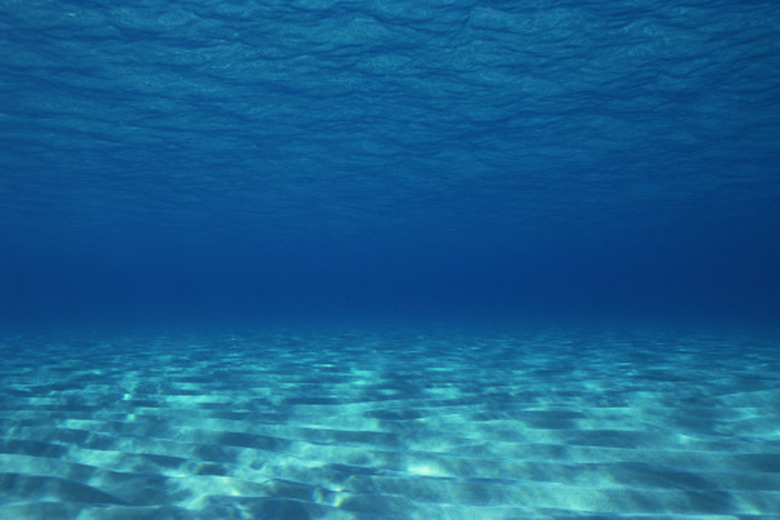Difference Between Continental & Oceanic Plates
Earth's surface is divided into approximately a dozen rigid pieces, comprised of eight major and several minor tectonic plates. These plates are one of two primary types: oceanic plates or continental plates. While these two types of plates share a lot in common, there are a number of key differences that differentiate the two and influence the tectonic rhythms that help define our planet's fundamental geologic processes.
Differences in Formative Process
Differences in Formative Process
Oceanic plates are formed by divergent plate boundaries. These zones, located along mid-ocean ridges, represent areas where upwelling magma creates new oceanic crust. As lava flows from these volcanic ridges, it quickly cools, forming extrusive igneous rock. Continental plates, meanwhile, are formed primarily by convergent plate boundaries. These zones represent areas where oceanic plates collide with and plunge underneath continental plates – a process called subduction. As oceanic plates subduct, they melt to form magma. This magma cools over millions of years, producing intrusive igneous rock and new continental crust.
Differences in Composition
Differences in Composition
Oceanic plates are mafic in nature, composed of basalt rock and its coarse-grained equivalent, gabbro, both rich in iron, magnesium and calcium. In contrast, continental plates are felsic in nature, dominated by granitic rock with its abundant silica, aluminum, sodium and potassium. Metamorphic and sedimentary rocks also help build continental crust, much more varied geologically than its oceanic counterpart.
Differences in Density
Differences in Density
Because of their heavy ferromagnesian elements, oceanic plates are much denser than continental plates. The average density of ocean plates is approximately 200 pounds per cubic foot, while continental crust ranges between about 162 and and 172 pounds per cubic foot. This difference in relative density causes oceanic plates to subduct beneath the more buoyant continental plates. This also allows the denser oceanic plates to sink further into the fluid asthenosphere, causing them to lie below sea level. In contrast, the more buoyant continental plates float higher, resulting in dry land.
Differences in Age
Differences in Age
Oceanic and continental plates differ radically in age because of tectonic processes. Divergent plate boundaries continually renew oceanic plates while the subduction zones of convergent boundaries continually recycle them. As a result, the oldest oceanic rocks are less than 200 million years old. In contrast, continental plates take a long time to form but are rarely destroyed. Much of the continental crust exceeds 1 billion years in age, and its oldest rocks may be as old as 4 billion years.
Differences in Range and Thickness
Differences in Range and Thickness
Oceanic plates cover approximately 71 percent of Earth's surface, while continental plates cover 29 percent. While oceanic plates cover far more area, they are much thinner than continental crust. Despite their greater density, oceanic plates average only about four or five miles in thickness, compared to an average of 25 miles for continental plates; under major mountain belts, the continental crust can reach nearly 50 miles thick. The combination of their respective area and average thickness means that there is actually twice as much continental rock as oceanic rock.
References
Cite This Article
MLA
Bennett, Doug. "Difference Between Continental & Oceanic Plates" sciencing.com, https://www.sciencing.com/difference-between-continental-oceanic-plates-8527794/. 5 April 2018.
APA
Bennett, Doug. (2018, April 5). Difference Between Continental & Oceanic Plates. sciencing.com. Retrieved from https://www.sciencing.com/difference-between-continental-oceanic-plates-8527794/
Chicago
Bennett, Doug. Difference Between Continental & Oceanic Plates last modified March 24, 2022. https://www.sciencing.com/difference-between-continental-oceanic-plates-8527794/
